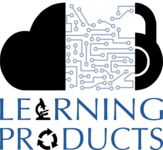The networking of products and the availability of massive computing, storage and network resources offer new economic opportunities for the device industry. In this way, "intelligent products" can be developed, i.e. products in which the operation and evaluation of the results are supported and monitored by recommendation and decision-making services. Learning algorithms built into such products can help avoid operating errors, facilitate the training of new operators, ensure the correct analysis of measurement data, reduce maintenance costs of devices, and much more. In addition to these opportunities, however, the development of such products is associated with far-reaching problems and risks and offers a wide field of open, scientific questions.
The aim of the "Learning Products" research project is the development and evaluation of a method set for the development of intelligent measuring devices. Due to the particularly high requirements in terms of data security and reliability, the content of the project focuses on medical devices, the security and accuracy of which are to be increased, while at the same time ensuring high standards.
The research project follows the approach of the distributed training of models and develops innovative algorithms to secure privacy. Microscope images, ECG data, MRT scans or pulse measurements remain with the patients or their representatives, doctors and clinics directly on site. The operation of medical devices is to be supported and monitored through continuous and comprehensible evaluation and evaluation of measurement data, as well as errors and uncertainties in machine and human decision-making to be recognized and corrected at an early stage.
Secsy Projektwebsite






